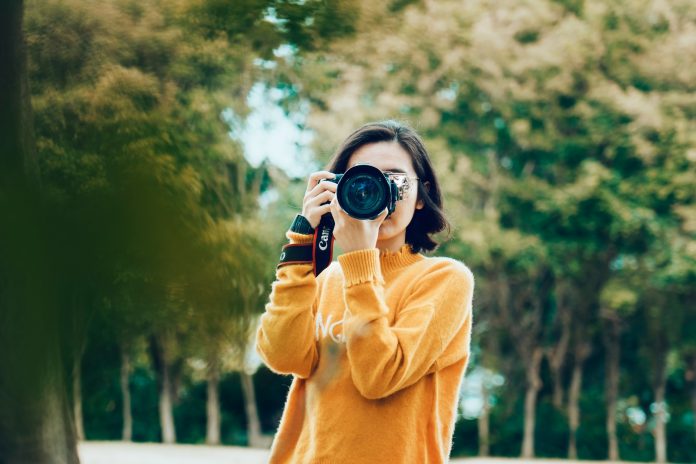Fashion portraits have been an essential part of visual culture for decades, from the golden age of Hollywood to the modern-day fashion industry. These portraits are more than just photographs; they are artistic expressions that capture the essence of style, personality, and timeless elegance. Fashion photography, when done right, has the power to transcend trends, capturing images that remain relevant and captivating for years. Whether you’re a budding photographer or an established professional looking to refine your craft, creating timeless fashion portraits requires a combination of technical skill, artistic vision, and an understanding of the elements that make a portrait enduring.
In this guide, we will explore how to create timeless fashion portraits that not only capture the latest trends but also ensure that the images remain captivating across time. From understanding the role of lighting, composition, and wardrobe choices, to working with your subject and developing a unique perspective, the following tips will help you create portraits that stand the test of time.
- Understand the Power of Simplicity
Timeless fashion portraits are often defined by their simplicity. The images that endure are those that avoid excessive ornamentation, unnecessary props, or overly complex compositions. Rather than focusing on the latest fads or trends, timeless fashion photography highlights the elegance of the subject and their clothing in a way that feels effortless yet polished.
Simplicity allows the subject of the portrait—whether a model or a fashion item—to shine. By eliminating distractions from the scene, the focus stays on the subject, creating a lasting and elegant image. A clean backdrop, minimalistic styling, and natural poses are often key ingredients in creating a timeless feel.
When planning a fashion portrait, focus on creating a clean and uncluttered frame. Opt for neutral or solid-colored backgrounds that won’t overpower the subject. This could be a plain white or black backdrop, or even a subtle outdoor scene. The goal is not to distract from the subject but rather to enhance it.
- Focus on Classic Wardrobe Choices
Fashion is constantly evolving, but certain styles, colors, and silhouettes stand the test of time. When shooting fashion portraits with a timeless appeal, it’s essential to focus on classic wardrobe choices that transcend fleeting trends. Think of iconic items like a perfectly tailored suit, a little black dress, or a crisp white shirt. These items have been staples in fashion for decades and continue to be relevant in modern styling.
Classic clothing not only lends the image a timeless quality but also elevates the portrait, adding a sense of sophistication and refinement. When selecting outfits for fashion portraits, choose clothing that’s both flattering to the model and visually impactful, yet not overly trendy. Avoid items that scream “of the moment,” and instead lean toward pieces that are enduring in their elegance.
While neutrals like black, white, beige, and navy are timeless and versatile, don’t be afraid to incorporate subtle pops of color. A rich jewel tone, for example, can add depth and interest to the portrait without overpowering the image. The key is to focus on quality fabrics and designs that will not feel dated as the years go by.
- Master the Art of Lighting
Lighting is arguably one of the most important elements in creating timeless fashion portraits. The way light interacts with the subject can completely transform the mood and overall feel of an image. Natural light is often a favorite for timeless portraits because it creates soft, flattering shadows and enhances the subject’s features in a way that feels organic and unforced.
When shooting with natural light, the best times are usually early in the morning or late in the afternoon, when the light is soft and warm. Avoid harsh midday light, as it can create unflattering shadows and highlights. If you’re shooting indoors, position the subject near large windows to take advantage of diffused light. This will create a beautiful, soft effect that enhances the subject without overpowering them.
Artificial lighting can also be used to great effect in fashion portraits, but it’s essential to understand how to control it. Softbox lights and ring lights can replicate the effect of natural light, providing flattering illumination and soft shadows. Additionally, using light modifiers like reflectors can help fill in shadows and ensure the subject’s features are evenly lit. For a timeless feel, always aim for lighting that is gentle and enhances the natural beauty of the subject, avoiding harsh or overly dramatic lighting unless it’s part of a specific artistic concept.
- Perfect the Posing
The way a subject is posed plays a crucial role in whether the portrait has lasting appeal. Timeless fashion portraits typically feature poses that feel natural, elegant, and effortless. Avoid overly exaggerated or stiff poses, as they can make the portrait feel dated or forced. Instead, aim for poses that convey movement or fluidity, as these often result in the most captivating images.
One of the most important aspects of posing is ensuring that the model feels comfortable and confident. A relaxed subject will naturally exude the grace and confidence that timeless fashion portraits are known for. Work with your model to find poses that feel authentic to them while also showcasing the clothing in the best light. Classic poses, such as slightly angled body stances or the model gently placing their hand on their hip, can create a sense of elegance without feeling stiff or artificial.
Remember, the face of the model is just as important as the body. Subtle expressions, such as a slight smile, a contemplative look, or a direct gaze into the camera, can create a connection between the subject and the viewer, making the portrait more engaging and memorable.
- Pay Attention to Composition
Composition is a critical factor in creating timeless fashion portraits. The arrangement of elements within the frame has a significant impact on the viewer’s perception of the image. Classic portraiture often adheres to simple rules of composition, such as the rule of thirds, leading lines, and symmetry, to create balanced, aesthetically pleasing photographs.
The rule of thirds suggests dividing the frame into nine equal parts and placing the subject or key elements along these lines. This technique creates a sense of harmony and allows the subject to be placed in a visually engaging part of the image. Additionally, consider the negative space in your composition. Embracing negative space—empty or unoccupied areas in the frame—can create a sense of simplicity and elegance that enhances the subject and allows them to breathe within the image.
Be mindful of how you place the subject within the frame. While centered compositions can create a sense of formality, asymmetrical compositions can add visual interest and create a more dynamic image. Keep in mind that the goal is to create an image where every element serves the overall narrative of the portrait, contributing to its timelessness.
- Embrace the Power of Black and White
While color photography has its place, many timeless fashion portraits are shot in black and white. Black-and-white images are classic, and their simplicity allows the viewer to focus entirely on the subject without being distracted by color. This style of portraiture emphasizes contrast, textures, and lighting, bringing out the model’s features in a way that color photography often cannot.
When shooting in black and white, it’s essential to focus on the tonal range of the image. Look for contrasts between light and dark areas, as this will add depth and drama to the portrait. Additionally, consider the textures of the clothing and the model’s skin. Textures often pop more in black-and-white images, creating a more tactile and emotional response from the viewer.
If you’re unsure about shooting in black and white during the photoshoot, consider shooting in color first and then converting to black and white in post-processing. This allows you to explore both options and select the version that feels most timeless.
- Post-Processing: Subtle Refinements
While post-processing is a crucial part of modern photography, it’s important to approach it with a light touch when creating timeless fashion portraits. Excessive retouching, heavy filters, or trendy editing techniques can quickly date an image. Instead, aim for subtle refinements that enhance the natural beauty of the subject and the clothing.
Adjustments to exposure, contrast, and sharpness can help bring out the details in the portrait while maintaining the image’s authenticity. Focus on preserving natural skin tones, fabric textures, and facial expressions. Avoid overly smooth skin or overly saturated colors that might make the image feel artificial. The goal of post-processing is to enhance the photograph while staying true to its timeless essence.



